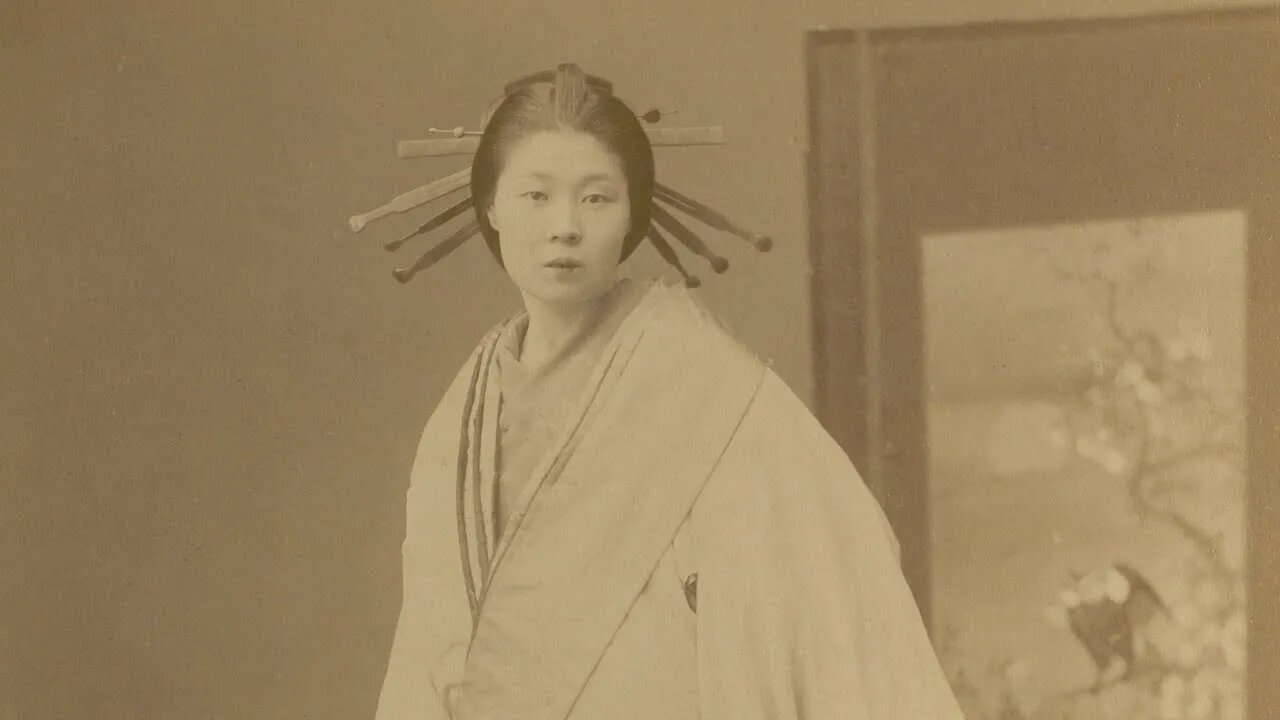Premium Only Content

A Japan that no one knows Siebold's Daughter, God of Medicine
#Japan
#Tokyo
#Japanese
Healing Japan Travel
日本語バージョンはこちら Click here for the Japanese version
https://youtu.be/erjYZDV-VuE
Gojoten Shrine
This shrine is so quiet that one almost forgets that it is next to Hanazono Inari Shrine (Ana Inari).
Although it is the same shrine, the atmosphere is completely different.
The sanctuary was noticed above the Suribachi Mountain burial mound until the Muromachi Period.
There were many other burial mounds in the Ueno area, such as the Sakuraundai burial mound, the Hebizuka burial mound, and the Hyokeikan burial mound.
There were many other burial mounds in Ueno, but they were destroyed by the construction of the Tokyo Bunka Kaikan and the Tokyo National Museum.
I imagine that perhaps the owners of these burial mounds were the helpers of Yamatotakeru in his eastern expedition.
Gojoten Shrine Neighborhood
1 min. walk Hanazono Inari Shrine
2 minutes on foot Shinobazunoike Benten Hall
2 minutes on foot Ueno Daibutsu (Great Buddha)
2 minutes on foot: SURIHATSUYAMA burial mound
5 minutes on foot Ueno Toshogu Shrine
9 minutes on foot Marishiten Tokudaiji Temple
10 minutes on foot Tokyo National Museum
12 minutes on foot Yushima Tenmangu Shrine
16 minutes on foot Shimotani Shrine
16 minutes on foot Shoichi Jigo Inari Shrine
17 minutes on foot Nezu Shrine
20 minutes on foot Tsumagoi Shrine
21 minutes on foot Moto-Mishima Shrine
23 minutes on foot Onoterusaki Shrine
25 minutes on foot Higashi Honganji Temple
When I visit shrines in Tokyo, I am often amazed at the sanctuaries that have been protected by the people.
Flood, fire, earthquake, war, and worship.
Small shrines, shrines perched on the rooftops of buildings, and shrines directly under expressways.
Sanctuaries that are close to people in any form, and the guardians who protect them.
I made this video to share these beautiful images with you!
The Japanese landscape and the Japanese people of the past remain in old photographs.
Some of the photos are around 100 years old, some are about 150 years old, and some are 85 years old.
Please feel the connection with people from the past!
Source
Photo by Ine Kusumoto
https://commons.wikimedia.org/wiki/File:Ine_Kusumoto.jpg
Suribachi Mountain Tumulus by Tamabayashi Haruro, "Shimotani and Ueno", Toudai-sha, Showa 7. National Diet Library Digital Collections
Yamatotakeru, "Dai Nihon Meisho Kan," "Nihon Buson" (Tokyo Metropolitan Library), processed and created.
Ivory inro, Japan, before 1916.Science Museum, London
https://www.europeana.eu/en/item/9200579/sn29p47t
Université Côte d'Azur.1889 Sailor Boys in Yokohama Harbour.
Photo acquise par le peintre Louis Dumoulin lors de son premier séjour au Japon en 1888-1889-5
BGM
Yuyake Koyake" (Sunset glow)
A Japanese children's song and shoka with lyrics by Ameko Nakamura and music by Makoto Kusakawa.
Lyrics written in 1919, music composed in 1923 (one month before the Great Kanto Earthquake).
My name is Mayu Noda.
I will introduce the charm of shrines around Tokyo, which I love.
Sometimes temples too.
Please subscribe to our channel.
Inside Japan's Coolest Shrine
https://www.youtube.com/watch?v=siS4puFCoDk
Travel to Nagano #1☆ Visit all 5 Togakushi shrines!! Japan vlog
https://www.youtube.com/watch?v=e9SPkyBNk2g
TOKYO AT NIGHT 🇯🇵 | Meiji Jingu Shrine | Tokyo Travel Vlog
https://www.youtube.com/watch?v=HTiI_AI_RzQ
Walk in Kyoto, Japan | Kyomizu Temple
https://www.youtube.com/watch?v=g0aWmu_PhlA
Japan in 8K ULTRA HD - Land of The Rising Sun (60 FPS)
https://www.youtube.com/watch?v=G5RpJwCJDqc
-
 LIVE
LIVE
Badlands Media
9 hours agoBaseless Conspiracies Ep. 149
5,581 watching -
 2:56:12
2:56:12
TimcastIRL
4 hours agoTrump SLAMS Democrats Over Irina Zarutska Killing, Says WAR Over Chicago Crime | Timcast IRL
149K88 -
 29:08
29:08
Afshin Rattansi's Going Underground
1 day agoCol. Lawrence Wilkerson: World War 3 is ALREADY HERE, Netanyahu is INTENT on Greater Israel
10K21 -
 LIVE
LIVE
SpartakusLIVE
5 hours agoNONSTOP Snipes, Rockets, and BICEPS = Monday MOTIVATION
481 watching -
 DVR
DVR
Rallied
6 hours ago $0.39 earnedSolo Challenges All Day
42.4K2 -
 1:27:53
1:27:53
Flyover Conservatives
9 hours agoIs AI Actually Alien Intelligence? Dr. Jason Dean Exposes the Dark Side | FOC Show
21.9K -
 1:47:36
1:47:36
Glenn Greenwald
6 hours agoJD Vance and Rand Paul Clash on Due Process: War on Terror Echoes; Has the U.S. Given Up on Confronting China? Ben Shapiro's Latest Falsehoods About Israel | SYSTEM UPDATE #510
93.2K65 -
 LIVE
LIVE
RaikenNight
3 hours ago $0.39 earnedExploring the Galaxy of No Mans Sky
172 watching -
 LIVE
LIVE
Spartan
5 hours agoRanked and Expedition 33 (NG+4 and all enemies Set to 10x health)
79 watching -
 2:54:31
2:54:31
Jokeuhl Gaming and Chat
8 hours agoDARKTIDE - Warhammer 40k w/ Nubes and AoA
11.9K1